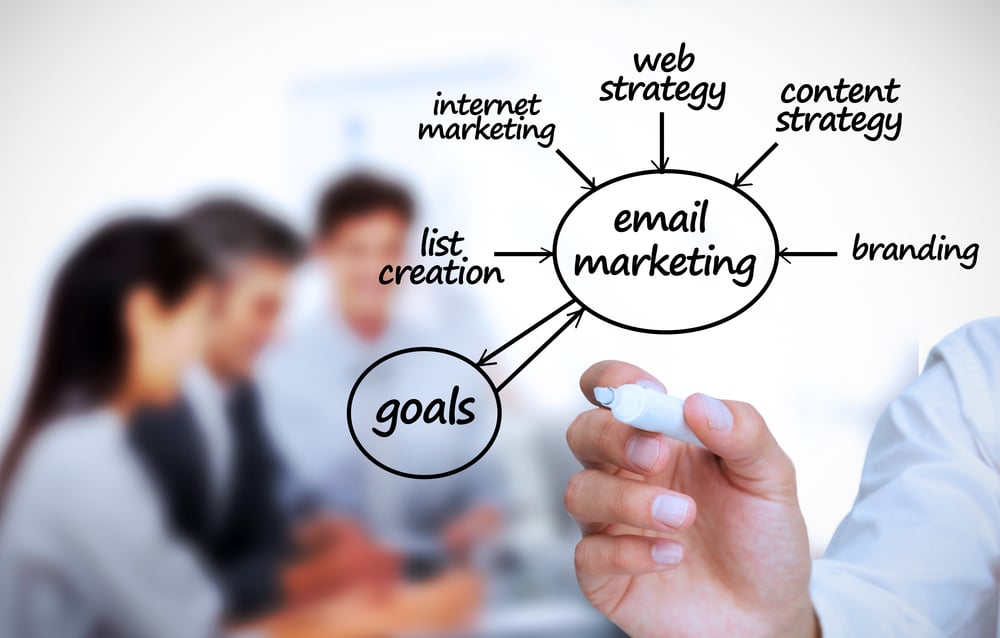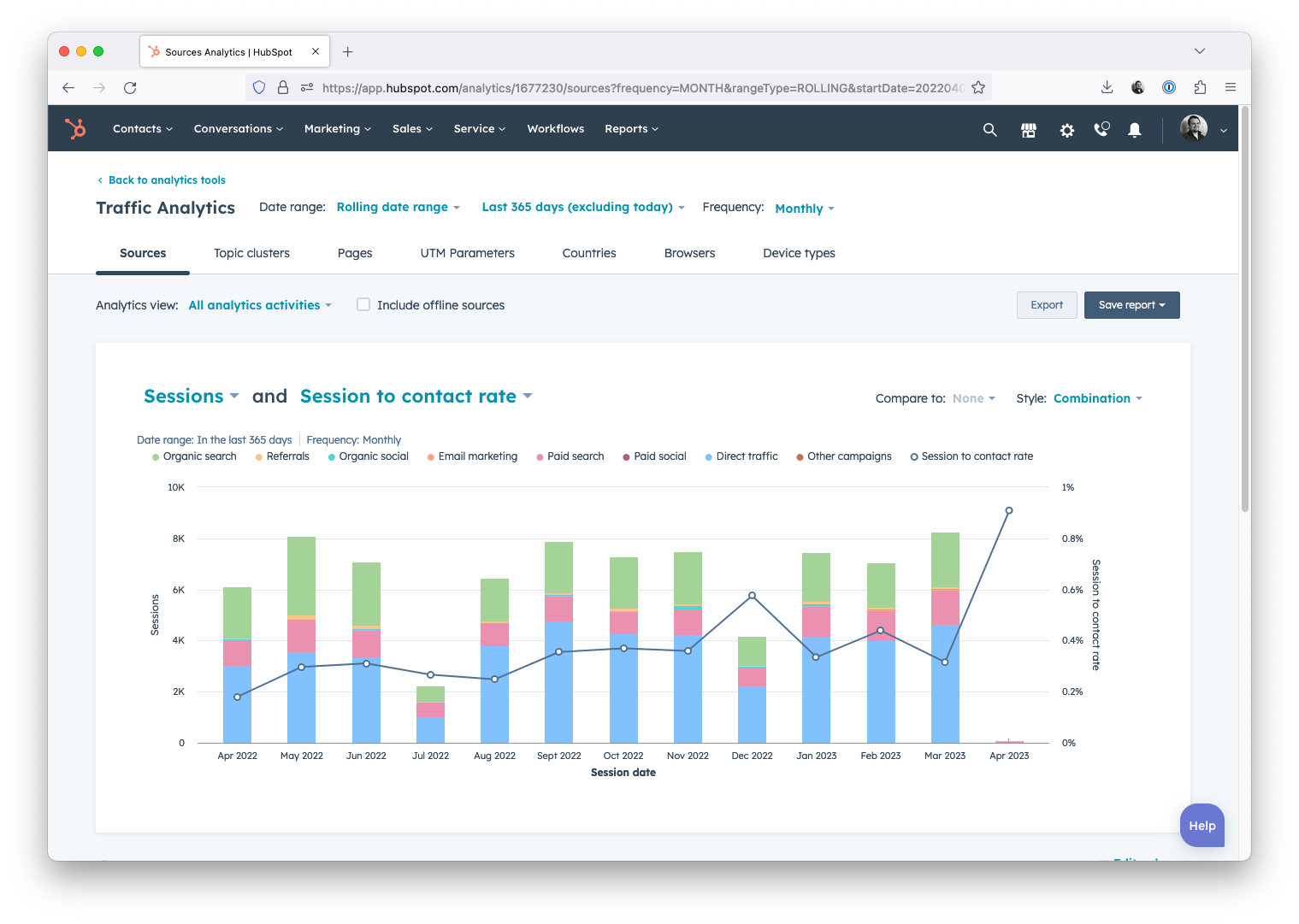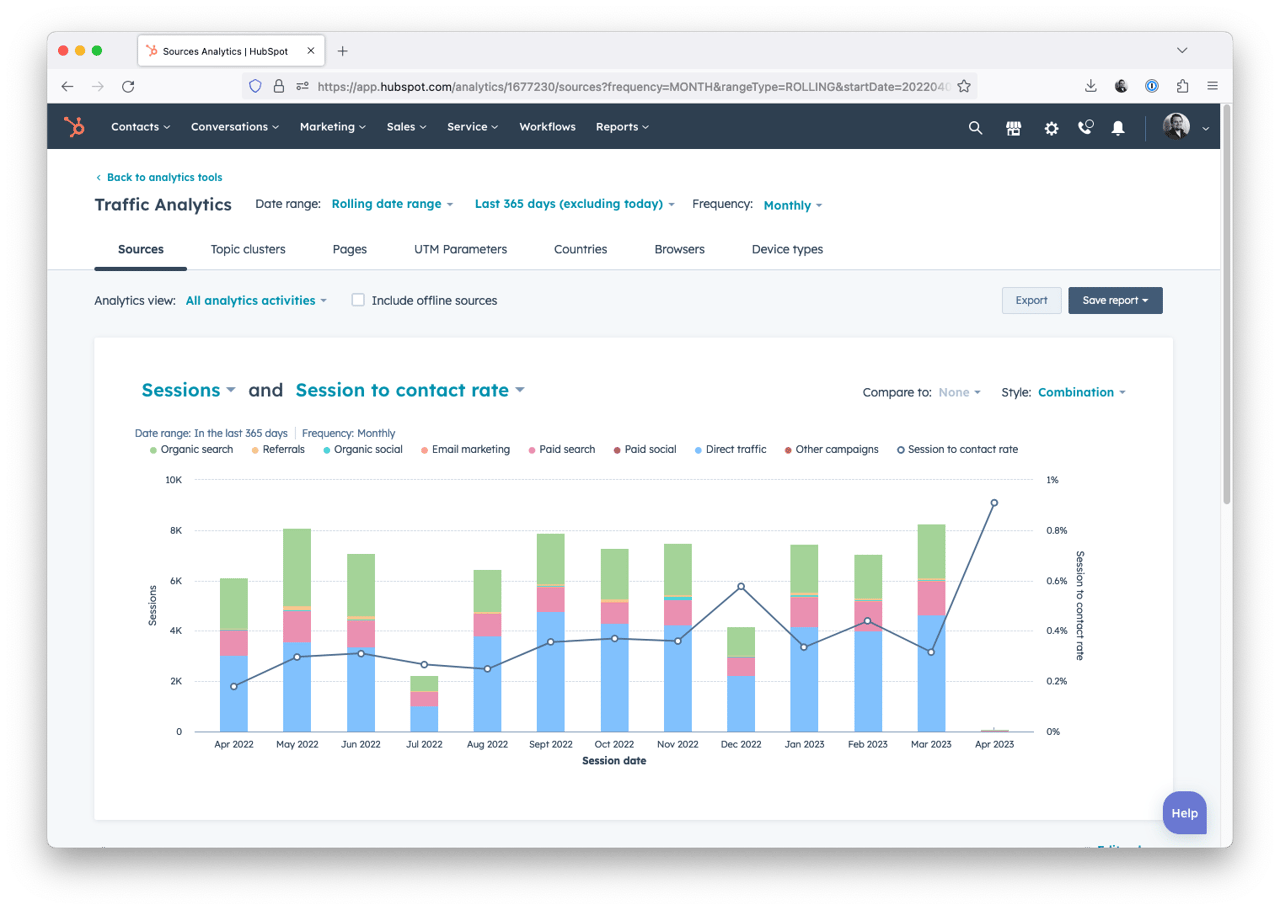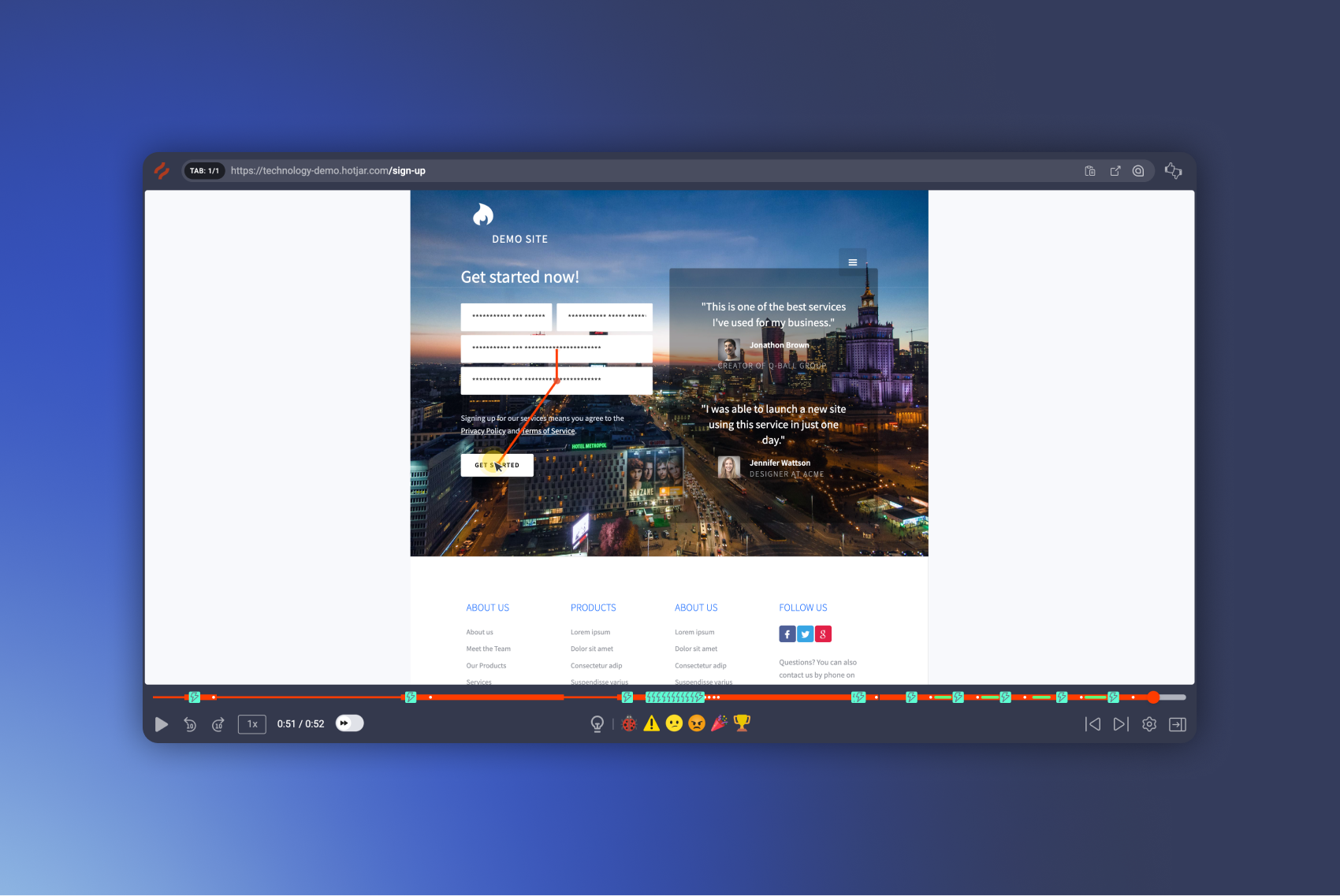How to get started with Inbound Marketing in HubSpot
-
Discover Inbound Marketing: Attract customers with valuable content, utilizing HubSpot's comprehensive platform
-
Inbound vs. Outbound: Focus on personalized content and save 61% on lead generation compared to traditional methods
-
Lay a Strong Foundation: Identify target audience, develop buyer personas, and create effective content strategies with HubSpot
-
Implement Tactics: Optimize email marketing, lead nurturing, and social media presence using HubSpot's powerful tools
-
Measure Success: Track KPIs, refine strategies, and leverage HubSpot Academy for ongoing learning and growth
Table of Contents
- Introduction
- Understanding Inbound Marketing and HubSpot
- Setting Up a Strong Foundation for Inbound Marketing
- Implementing Inbound Marketing Tactics with HubSpot
- Measuring Success and Optimizing Strategies in HubSpot
- Conclusion
Introduction
Are you ready to supercharge your marketing strategy and drive more leads for your sales team? Look no further because inbound marketing might be the answer to your prayers.
This powerful approach attracts customers by delivering valuable content tailored to their needs, turning complete strangers into loyal promoters of your brand. And when it comes to implementing inbound marketing, HubSpot is the go-to platform trusted by countless businesses worldwide.
Inbound Marketing and HubSpot
Inbound marketing is a powerful methodology that focuses on attracting customers by providing useful content and experiences specifically tailored to their needs.
Instead of chasing down prospects with traditional outbound tactics like cold calls or intrusive ads, inbound marketing helps you create relevant resources that meet your target audience where they are in their buyer's journey, making it easier for them to find and engage with your company naturally.
Now, let's talk about HubSpot: the all-in-one platform designed to streamline your Inbound Marketing efforts like a well-oiled machine. Not only does HubSpot offer robust tools for automating emails, managing social media presence, creating blog content, and optimizing landing pages, but its analytics features also allow you to track performance data seamlessly.
This means you can quickly identify what works best and make data-driven decisions on how to improve your sales and marketing strategies.

The Difference Between Inbound and Outbound Marketing
As a marketer, you're likely familiar with the tussle between inbound and outbound. To maximize the effectiveness of your campaigns, it's crucial to understand their core differences.
In essence, inbound marketing is like hosting an exclusive party that people are eager to attend because they've heard great things about it. You create content that attracts those who share your values and interests - in other words, your ideal customers.
On the other hand, outbound marketing is like throwing a massive, generic party and hoping that some of your ideal customers might stumble upon it. You cast a wide net, but it's not personalized, is high effort, and it can be hit-or-miss.
Both approaches have their place in modern growth strategies, but consider this: data from HubSpot suggests that inbound leads cost 61% less than outbound leads on average.
This is partly because inbound tactics "magnetize" potential customers by offering valuable content tailored to their needs and preferences. For example, instead of spending money on telemarketing efforts targeting anyone with a phone line (outbound), imagine crafting blog posts addressing specific pain points faced by medium-sized technology companies using SEO best practices (inbound).
So, as you strategize ways to generate more high-quality opportunities for your sales team, keep in mind that combining personalized content creation with effective distribution channels will ultimately yield higher returns than casting too wide a net through traditional advertising methods alone.

Setting Up a Strong Foundation for Inbound Marketing
To successfully implement inbound strategies with HubSpot, it's essential to establish a strong foundation. This includes identifying your ideal buyers, developing comprehensive personas, creating valuable marketing assets, engaging strategies, and setting up effective landing pages and lead forms.
Identifying Your Target Audience and Developing Buyer Personas
Establishing a strong structure for your inbound marketing efforts starts with identifying your audience and developing personas. By understanding the specific needs, preferences, and challenges of the people you're trying to reach, you can create more effective and personalized marketing campaigns. Here are some steps to take:
-
Define your target audience: Start by identifying key demographics, such as age, gender, location, income level, or job title that are most relevant to your products or services.
-
Research existing customers: Conduct interviews, surveys, and examine customer data to identify trends and patterns in their behavior and preferences.
-
Create detailed buyer personas: Based on your research findings, build out comprehensive profiles of your ideal customers. Include information about their goals, challenges, motivations, and online habits (such as preferred social media platforms).
-
Utilize HubSpot's resources: HubSpot offers helpful guides and templates for creating personas. Their Knowledge Base is an invaluable resource when it comes to refining and editing persona details.
-
Align marketing efforts with personas: Once you have established your potential prospects, tailor content creation and distribution channels accordingly for better targeting throughout the inbound sales methodology.
-
Make adjustments over time: As you collect more data on your customer's behaviors and preferences or as market conditions change; don't hesitate to revise your personas accordingly.

Creating a Comprehensive Content Strategy
A key component of a successful inbound marketing campaign in HubSpot is creating a comprehensive content strategy. To establish a strong foundation, start by outlining your personas and identifying marketing triggers based on their needs and pain points.
To make sure your content is effective, consider using a pillar page - a long-form landing page that comprehensively covers a core topic (like inbound marketing) and links to related blog articles.
Additionally, leverage customer feedback and analytics to refine your strategy over time for enhanced results.
Setting Up Effective Landing Pages and Lead Forms
If you want to convert visitors into leads, it’s crucial to have effective landing pages and lead forms. Here are a few tips for setting them up effectively:
-
Keep it simple: Your landing page should be easy to navigate and have a clear call-to-action (CTA). Avoid clutter and stick to one or two CTAs.
-
Focus on value: Make sure your landing page offers something of value to the visitor, whether it’s an ebook, webinar, or free trial.
-
Optimize for mobile: More and more people are using their phones to browse the internet, so make sure your landing page is optimized for mobile devices.
-
Test and refine: Use A/B testing to try out specific engagement strategies and variations of your landing page and see what works best for your audience.
-
Use lead forms strategically: Your lead form should ask for just enough information to qualify the lead without overwhelming them.
-
Follow up quickly: When someone fills out a lead form, make sure they receive an immediate response from your team.
-
Analyze your results: Use HubSpot’s analytics tools to track how many people are converting on your landing pages and adjust your strategy as needed.
Implementing Inbound Marketing Tactics with HubSpot
Discover how to optimize your email marketing, lead nurturing, social media marketing, search engine optimization, blog writing, and visitor-to-lead conversion strategies using HubSpot's powerful inbound marketing tools.
Email Marketing and Lead Nurturing
Email marketing and lead nurturing are two essential components of any successful inbound marketing campaign. Here are some tips to get started with email marketing and lead nurturing in HubSpot:
-
Start by building targeted lists of your contacts based on their interests and behaviors using HubSpot's list segmentation capabilities.
-
Use automated workflows to deliver personalized emails at the right time, based on the lead's stage in the buyer's journey.
-
Create eye-catching email templates with HubSpot's drag-and-drop editor and personalize them with dynamic content.
-
Test different subject lines, send times, and content formats to optimize your email open rates and click-through rates.
-
Use lead scoring to prioritize your follow-up efforts and identify which leads are most likely to convert into paying customers.
-
Track key performance indicators such as open rates, click-through rates, conversion rates, and revenue generated from email campaigns to measure success over time.
Social Media Marketing
Social media can play an important role in your inbound marketing strategy when using HubSpot. Here are some tactics you can implement:
-
Define your social media goals: Determine what you want to achieve through social media marketing, whether it's to increase brand awareness or to generate leads.
-
Create engaging content: Share a variety of content, including blog articles, videos, and infographics that are relevant and valuable to your target audience to generate new leads.
-
Optimize for each platform: Tailor your content and messaging for each platform you use, such as Twitter, Facebook, or LinkedIn.
-
Leverage paid advertising: Use paid ads to reach a wider audience and drive traffic back to your website.
-
Engage with your followers: Respond to comments and messages, and actively participate in conversations related to your industry or brand.
-
Analyze data and adjust strategies: Use HubSpot's analytics tools to track social media metrics such as engagement rates and click-through rates, and adjust your strategy accordingly to reach the right audience.
![]()
Optimizing for Search Engines and Creating Blog Content
To successfully implement inbound marketing strategies with HubSpot, it is important to optimize for search engines and create valuable blog content. Here are some tips for doing so:
-
Conduct keyword research and incorporate relevant keywords into blog posts to improve search engine rankings.
-
Create high-quality, original content that provides value to the target audience and addresses their pain points.
-
Use engaging headlines and formatting techniques such as bullet points and subheadings to make the content easily scannable.
-
Include internal and external links in the content to increase credibility and provide additional resources for readers.
-
Consistently publish new blog posts on a regular schedule to keep subscribers engaged and improve search engine rankings.
-
Monitor analytics data to track performance, identify areas of improvement, and adjust strategies accordingly.
Using HubSpot Tools to Convert Visitors into Leads
If you're looking to generate high-quality leads for your business, HubSpot offers a range of powerful tools to help you convert website visitors into qualified leads. Here are some tips on how to best use these tools:
-
Start by creating compelling offers – whether it's an exclusive webinar, an informative whitepaper, or a free consultation – that will entice visitors to fill out a form and share their contact information.
-
Use landing pages to promote your offers and encourage visitors to complete the form. Make sure your landing pages have clear calls-to-action (CTAs) and are designed with conversion in mind.
-
Once you've captured a lead, nurture them through automated email workflows that deliver targeted content based on their interests and behaviors. This will keep them engaged with your brand and help move them closer to making a purchase.
-
Use HubSpot's lead scoring system to prioritize the most engaged prospects and focus your sales team's efforts on those most likely to close.
-
Finally, use the data collected from HubSpot's analytics tools to refine your campaigns over time and drive better results.

Measuring Success and Optimizing Strategies in HubSpot
After implementing your inbound marketing campaign in HubSpot, it's essential to measure its success using key performance indicators (KPIs), such as conversion rates and website traffic, and analyzing data to refine your strategies for improved results.
Key Performance Indicators and Analytics
Measuring the success of your inbound marketing campaigns in HubSpot requires tracking key performance indicators and using analytics to evaluate overall performance.
KPIs such as website traffic, conversion rates, and lead generation can be used to measure the effectiveness of your strategies over time. For example, evaluating sales efficiency in attracting and nurturing leads is a crucial metric for understanding how effective your campaigns are at generating revenue.
Additionally, metrics related to email marketing effectiveness can help you optimize your messaging for better engagement with potential customers.
Analyzing and Refining Your Inbound Marketing Strategies
One of the key aspects of building a successful inbound marketing campaign with HubSpot is analyzing and refining your strategies. Here are some tips to help you:
-
Use KPIs and analytics: Start by determining specific key performance indicators for your campaign. Use HubSpot's analytics tools to measure success against these KPIs.
-
Analyze customer feedback: Request feedback from potential customers, leads, and customers to understand what they like about your strategy and what they would like to see improved.
-
Refine content creation: Use information gathered during customer feedback analysis to refine content creation strategies that resonate with your target audience.
-
Optimize social media engagement: As a marketer using HubSpot, you can create engaging content on social media platforms, including Twitter, Facebook, and LinkedIn by optimizing your posts for each platform.
-
Continually iterate: Regularly analyze and refine your inbound marketing campaigns based on the results of your KPIs and analytics in HubSpot's dashboards.
Leveraging HubSpot Resources For Continued Learning And Growth
Once you have set up your inbound marketing campaign with HubSpot, it is important to continue learning and growing with the platform's resources. The HubSpot Academy provides a wide range of courses, certifications, and resources on inbound marketing best practices that can help marketers refine their strategies and stay up-to-date with the latest trends.
Frequently Asked Questions
What is Inbound Marketing in HubSpot all about?
Inbound marketing focuses on attracting, engaging, and delighting customers by providing valuable content tailored to their needs and interests. HubSpot offers tools to streamline the inbound process, such as email campaigns, lead magnets, and landing pages.
Why should I consider using HubSpot for my inbound marketing efforts?
HubSpot benefits businesses with its all-in-one software designed for managing inbound digital marketing tactics. It integrates seamlessly with CRM and sales teams, ensuring smooth communication between departments.
Should I invest in training resources before getting started with Inbound Marketing using HubSpot?
While basic knowledge is sufficient to start, investing in training resources can help you get the most out of HubSpot's advanced tools as well as strategic guidance on growing your business. Various support channels are available, including third-party trainers specializing in teaching inbound marketing practices.
Conclusion: Building a Successful Inbound Marketing Campaign in HubSpot
By following the outlines above, you can create a strong foundation for your inbound marketing strategy that attracts and converts visitors into leads and customers.
Remember to focus on creating relevant content, developing buyer personas, optimizing for search engines, and using HubSpot tools to convert visitors into good-fit leads. Once you launch your campaigns, don't forget to measure success through KPIs and refine your strategies based on analytics.
As you continue learning more about inbound marketing through resources like HubSpot Academy, you'll build momentum towards lasting relationships with your audience that will help your business grow over time.






